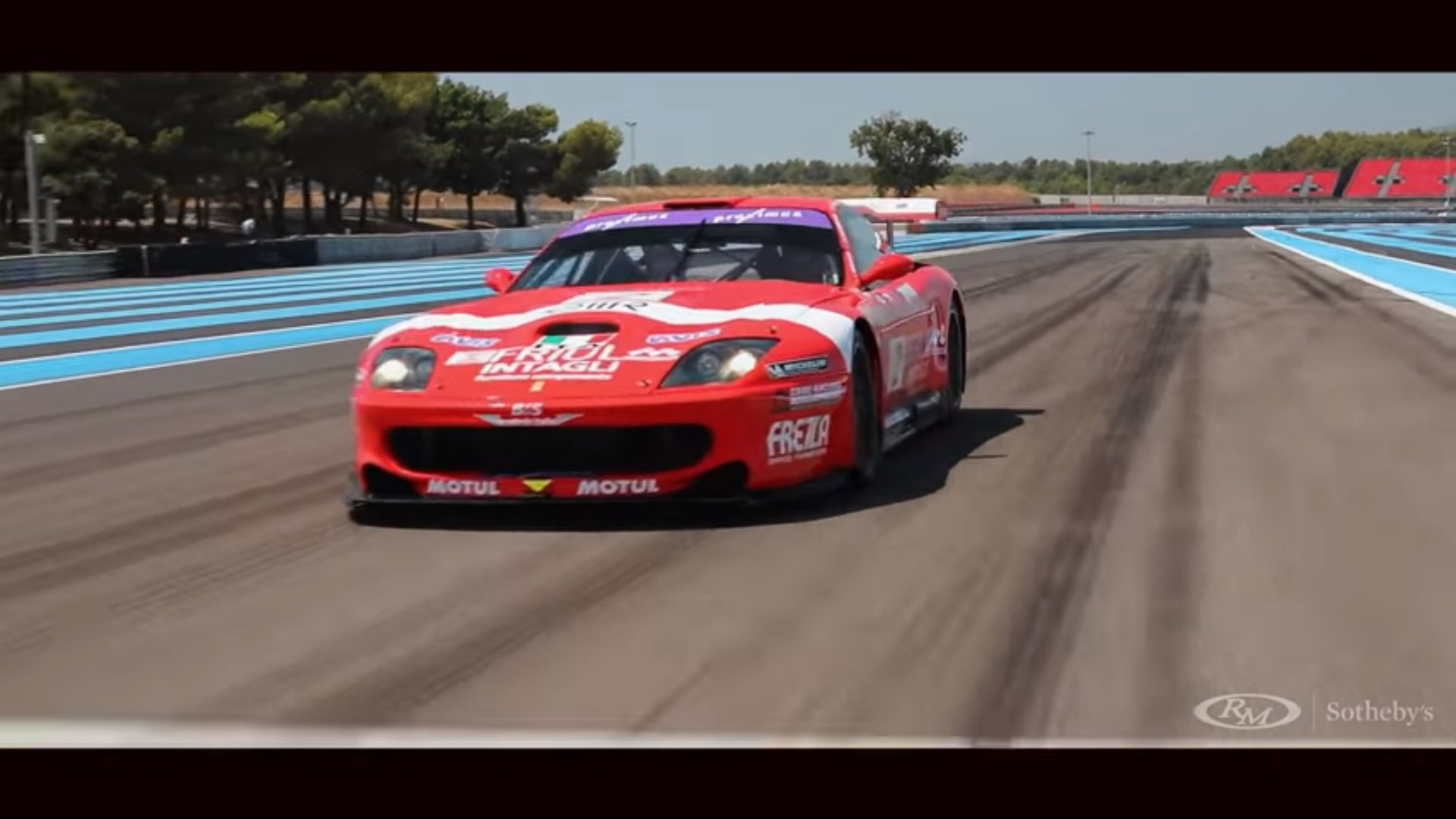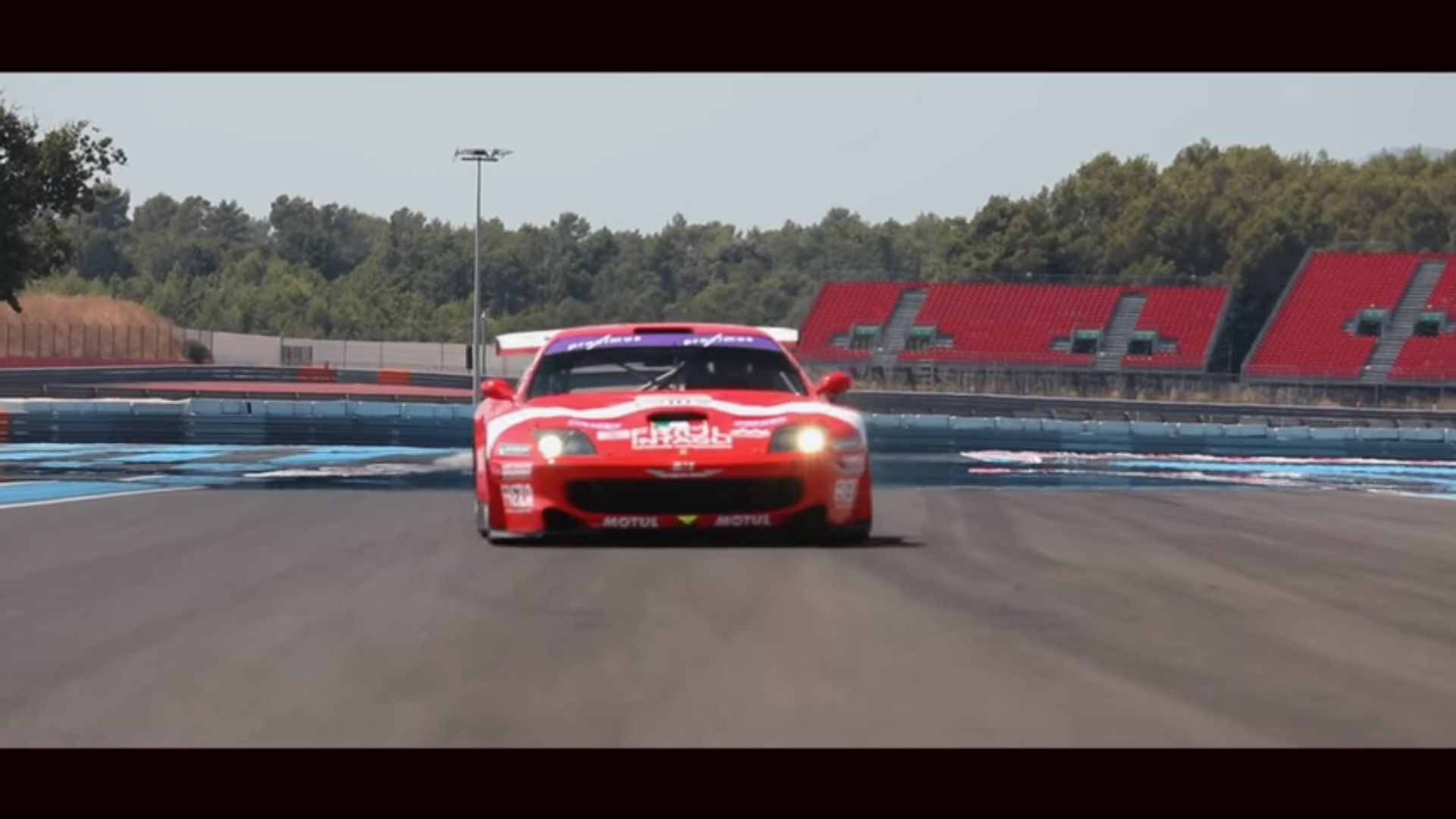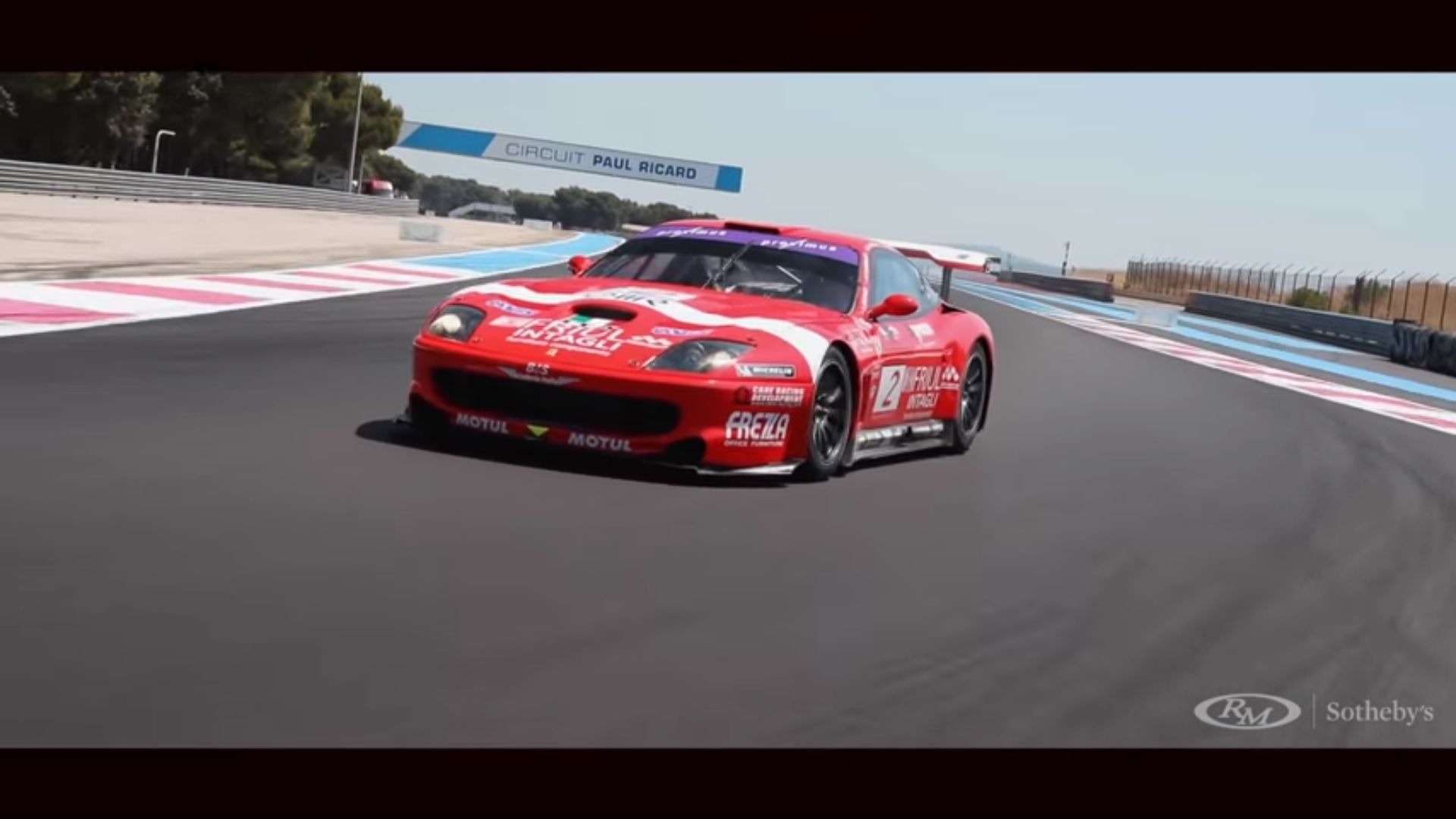Pedigree is what sells a racing car and this Ferrari 550 GT1 from the noughties is bathing in pedigree as the last V-12-engined Ferrari to win a high-profile 24-hour race and one of only 12 of its kind to be built by Prodrive in the UK.
No wonder, then, that this car became the most expensive car ever to be sold at an online-only auction after going for just under $4.3 million during the Shift/Monterey RM/Sotheby's auction that replaced the auction house's now traditional Monterey Car Week auction.
This is a racing Ferrari with British DNA
Ferrari is the last currently active team to have taken part in the first-ever Formula 1 World Championship Grand Prix at Silverstone 70 years ago. While the Italian automaker's astonishing dedication to Formula 1 causes many to consider that Ferrari is nothing without F1 and vice-versa, the Scuderia was once more focused on long-distance endurance racing than single-seater Grands Prix and it was at Le Mans that Ferrari built its reputation as a maker of ultra-reliable and fast cars.
Between 1960 and 1965 nobody could beat Ferrari at Le Mans but, as you all know, Ford then joined the freight and the Blue Oval's unlimited pockets squashed Enzo and his small band of brothers although Ferrari came close to winning the race in 1973 on the factory team's last appearance. Since then, it has been up to the privateers to defend Ferrari's honor in endurance racing and many a team have risen to the occasion with Ferraris racking up an impressive amount of victories, both outright and in class throughout the '70s, '80s, and '90s.
The 365 GTB/4 known as the 'Daytona', for instance, was a force to be reckoned with in the GT ranks back before Group 5 became a thing and, later on, the 512 BB/LM silhouette racer powered by that gorgeous boxer 12-cylinder won the IMSA GTX class, beating the likes of BMW and Porsche in the process. The '90s heralded the birth of (thus far) Ferrari's last purpose-built prototype race car, the 333 SP. With it, Scandia Racing, JB Giesse, BMS Scuderia Italia, or Momo Racing scored famous victories in the 24 Hours of Daytona, the 12 Hours of Sebring, and the Petit Le Mans race at Road Atlanta. Sadly, though, the 333 SP had to be content with merely a class win at Le Mans but we digress.
Come the new millennium, the 333 SP was beginning to show its age having debuted all the way back in 1994 and privateers turned their focus back to the GT ranks where the F40, the 348 TS, and the 355 had all been used with varying degrees of effectiveness throughout the mid-to-late '90s. Around that time, Ferrari introduced the replacement for the 512M.
It was, as Luca Di Montezemolo had ordered, a return to the old days when Ferrari's most potent standard production road car was a front-engined V-12 GT rather than a mid-engined V-12 supercar.
But Stephane Ratel, co-founder of the by-then defunct BPR Global GT Series and caretaker of the FIA GT Championship wanted the Prancing Horse back in the mix for the year 2000 to do battle with Lister's Storm, as well as the Porsche 911, the Dodge Viper, and the Marcos LM 600 Mantara. Italtechnica was first to chime in with the company building a car for First Racing to run in the top GT class (later renamed GT1). The effort, while commendable, fell short of the promise that comes part and parcel with a Ferrari-badged car and thus the 550 race car failed to make its mark on the championship.
One year later, however, Frederic Dor, owner of the Swiss Care Group, established a racing arm called Care Racing Development and the first order of business was to build a Ferrari GT car. With that goal in mind, Dor contracted Prodrive, famous for its WRC-winning Subarus, to build them a dozen 550 GT race cars that would comply with both the FIA's GT regulations as well as the SRO's GTS regulations so that it could compete in both the 24 Hours of Le Mans and the American Le Mans Series.
The first car was ready part-way through 2001 and it shone right out of the box winning its first race before the year's end. In the next eight seasons, the 550 GT1s built by Prodrive established themselves as some of the best GT1 cars in the world blending reliability with blinding performance levels that allowed them to take the fight to the factory-backed Prat & Miller Corvettes and beating them on numerous occasions both in America as well as at Le Mans where Prodrive scored a popular class win in 2003.
Chassis #ZFFZR49B000108418 (serial number CRD #02/2001) is the second chassis ever built by Prodrive for Care Racing Development and it made its race debut at the 2001 Petit Le Mans in the hands of Prodrive's own team named 'Prodrive Allstars' at the time. Driven by Peter Kox, Marc Duez, and Rickard Rydell, the car qualified a lowly 20th overall which was fifth in the competitive GTS class where all the top-gunners ran including Corvette and Saleen. While Audi dominated at the front, Corvette executed the race to perfection and won the GTS class by coming home sixth overall and ahead of the LMP 675 winner. The Ferrari, while fast at times, retired with an oil leak.
Following that maiden run, more disappointment followed in the car's second outing, the 2002 12 Hours of Sebring where a troubled outing ended with an anonymous 30th place finish. Thereafter, the car was handed over to the experienced BMS Scuderia Italia team, FIA Sportscar championship-winning team with the 333 SP and veteran of many F1 seasons. The team employed the semi-pro pairing of Lilian Bryner and Enzo Calderari in one of its cars while top-drawer talents like Tomas Enge, Andrea Piccini, or Jean-Denis Deletraz handled driving duties of the car you see here.
It is with these drivers that chassis #02 won four times during the 2002 FIA GT Championship as well as starting four races from pole position (including the 24 Hours of Spa). And the end of the season, Piccini and Deletraz were third in the standings behind one Lister crew and the championship-winning Larbre Competition pairing of Bouchut/Terrien that vaulted in front after winning at Spa.
The 2003 season yielded fewer victories for this car and its drivers, Luca Cappellari and Fabrizio Gollin, but BMS Scuderia romped away with all of the titles courtesy of an incredible run by team-mates Matteo Bobbi and Thomas Biagi who won the first five rounds of the season. This car, however, won its class at the Spa 24 Hours of Spa although it was classified second overall behind the winning N-GT-class Porsche in what was a grueling race of attrition. After 10 rounds, BMS Scuderia Italia and Care Racing Development occupied the entire rostrum in the GT class as Cappellari/Gollin were vice-champions while Bryner and Calderari were third in the standings thanks to them partnering Gollin and Cappelari at Spa. Stefano Livio, another BMS driver was fifth behind Lister's Andrea Piccini.
Before that car was ready, though, N-Technology campaigned a 550 GTS in 2003 under the JMB Racing banner. The result? A lowly 6th in the standings for Fabio Babini and Philipp Peter who were soundly beaten by the British 550s year-round.
The 2004 season was chassis #02's third full season of racing and, unarguably, it was its most successful. Kicking it all off with a victory in the Monza season-opener (from pole no less!), Fabrizio Gollin and Luca Cappellari scored two other victories to crown themselves FIA GT champions. While the tally of wins may not be impressive in itself, one of those victories came at the 24 Hours of Spa-Francorchamps in partnership with Lilian Bryner and Enzo Calderari. Just like in '03, the conditions were sometimes dreadful but, this time, the Ferrari fended the attack of the Porsches (that were quicker in the wet) to come home victorious and, in the process, become the last V-12 Ferrari to win a 24-hour race.
Calderari and Bryner capped off a decade-long partnership behind the wheel by once again finishing third in the standings behind BMS team-mates Matteo Bobbi and Gabriele Gardel. Lilian Bryner is also one of the most successful female race car drivers of the '90s and '00s scoring class wins at Daytona as well as winning the BPR GT Championship and scoring numerous other FIA GT championship class wins. Her partner, Enzo Calderari, was already an elder statesman of GT and touring car racing by the time he began his partnership with Bryner. As a semi-pro driver (he was a real estate agent and car salesman during the week), Calderari was an ETCC vice-champion and race winner with Jaguar as well as winning the Tourist Trophy when the fabled race was part of the WTCC's schedule.
Going back to the 550 GT1, its last season of competition was spent in the Italian GT Championship. Still under the banner of BMS Scuderia Italia, chassis #02 was oftentimes seen towards the front of the field and scored many podium finishes but victory lane eluded Luca Cappellari and Angelo Lancelotti who finished third in the standings before being retired to Care Racing Development's very own stable where it has been sitting since.
Now, after trading hands for $3.9 million (in excess of $4.2 million after adding taxes), the car is free to race again the Masters Endurance Legends series or the equivalent category of the Peter Auto organization.



